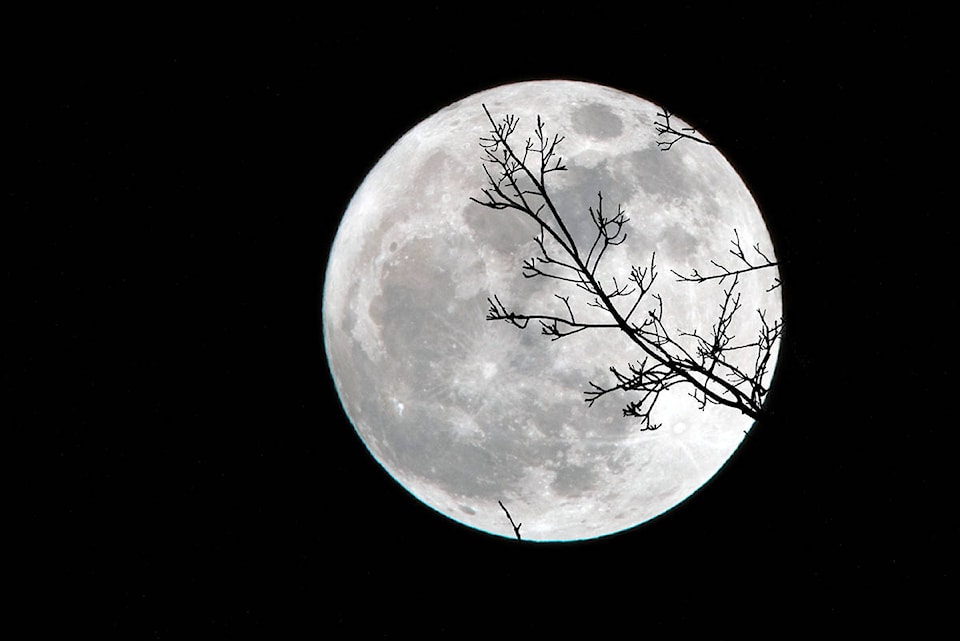It’s bright, it’s beautiful, and it’s about 20,000 kilometres closer to Earth than normal.
The supermoon isn’t the only spectacle lighting up the night’s sky Monday night when the orbits of both Venus and the moon make them appear brighter and bolder than most other nights.
A supermoon occurs when the moon is closer to Earth in its ongoing orbit, explains University of Victoria astronomer Karun Thanjavur.
“The supermoon is a full moon like any other,” he said. “The only other thing is that the moon is at its closest distance to the earth.”
READ ALSO: ‘It’s the sky putting on a show:’ Perseid meteor shower returns
On average, the moon is about 380,000 km from Earth, but as Thanjavur explains, the moon doesn’t orbit in a perfect circle, and because of that can fluctuate 20,000 kilometres or so.
“It’s like an elliptical,” he said, adding that another supermoon is coming in April.
That proximity means a brighter, more detailed moon for those viewing it from Earth.
“The full moon, to begin with, is quite bright,” Thanjavur said. “The skies are nice and clear these days [and] the air is nice and stable.
“To have such a nice, bright full moon in March makes it very spectacular.”
Thanjavur said special equipment isn’t necessary to take in the full effect.
“All the craters and the darker patches – those are all very nice and clear,” he said. “It is visually very appealing to see this big beautiful orb in the sky.”
But the supermoon isn’t the only phenomenon on display. Look west towards the setting sun and catch a glimpse of Venus, which is furthest away from the sun in its orbit – giving the human eye a chance to witness its shimmering brilliance.
READ ALSO: Skygazers spot mysterious flaming object during Sunday’s lunar eclipse
“Venus goes around the sun, sometimes it lines up and other times it appears,” Thanjavur said. “Right now, it is at its best because its farthest.”
Venus, commonly called ‘the evening star,’ can be viewed with a telescope, revealing its shadowy or sun-filled phases, but it isn’t hard to find with the naked eye either.
“It’s the brightest object in the sky,” Thanjavur said. “You can’t mistake such a bright object.”
nina.grossman@blackpress.ca
Follow us on Instagram Like us on Facebook and follow us on Twitter.
